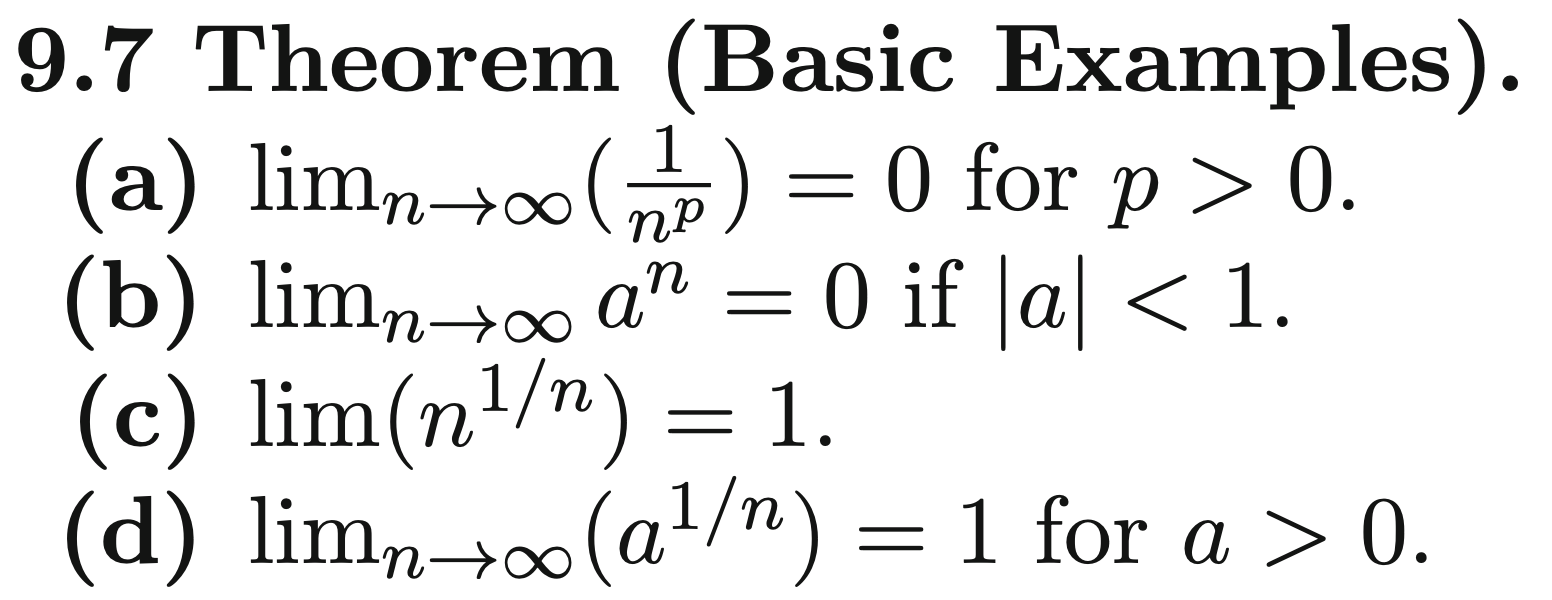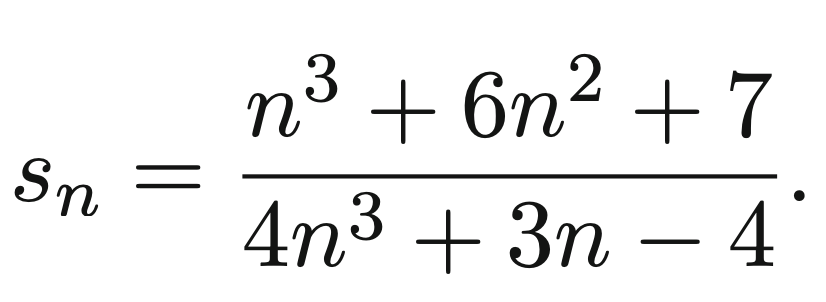Limit theorem for sequences
Convergent sequences are bounded
I will go over this proof in order to warm up, however I will skip the rest as they are extremely trivial results from calculus.
Assume that is a convergent sequence. This means, for ever there exists an such that
For now, pick , thus there is some where Now, notice that we can define We can further this to show by combining it with our first inequality. Now we know
Putting all this together, remember denotes an upper bound. Thus, let . For all we already know its bounded by . For the other before we include them as bounds. Remember, its an upper bound if every element is less than or equal to
Limit properties
- If then Another way of writing this is
- If and then Another way of writing this is
- If and then Another way of writing this is
- If then provided that and
- If and then provided and
For 4 and 5, we add extra conditions to avoid a divide by error.
Now here are some basic limits that should be familiar to you from calculus:

These should be really easy so I will do a couple:

This is equivalent to saying And then, for large n all elements go to 0 apart from
Formal definition of limit to infinity
For any sequence we can write provided that for each there is a number such that
In other words, for every supposid upper bound we can take, the sequence crosses it after a certain
There is a similar definition for : For any sequence we can write provided that for each there is a number such that .
The challenging values for these proofs are extremely large for positive infinity, or extremely small for negative infinity.
Note, some limits do not converge OR go to any infinity. Such as . Taking the limit of these is pointless.
A limit only exists if it converges to some point, or diverges to some infinity.
Proofs involving limits to infinity.
These are extremely similar to proofs we did before. Lets take a look:
 By definition, we need to show that for any there exists some where .
By definition, we need to show that for any there exists some where .
To find this we work backwards then write the proof:
Thus we are ready to write the proof
- Let and
- Then, for any we see that
- This implies that
- thus, we have showed that for any there exists where . This shows that the limit diverges to .
 We want to show for any there exists an such that .
We want to show for any there exists an such that .
Again working backwards, , we know that and . Thus, .
This we only need to show which can be done easily by
Formal proof:
- Let and
- Then, for any we have it so
- this implies that
- Furthermore, notice that
- Thus as is a lower bound for and is an upper bound for
Infinite limit theorems:
Let and be sequences such that and or is . Then .
Lets use the theorem to prove the following:
 We basically separate this into
As it is easy to show and we can use the theorem above to show the product goes to .
We basically separate this into
As it is easy to show and we can use the theorem above to show the product goes to .